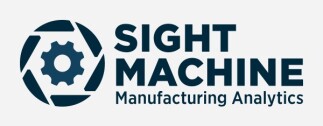Alex Theuma is Founder and Editor-in-Chief at SaaScribe. He interviewed Mercury Fund partner Aziz Gilani for a podcast that provides advice to SaaS company founders who may want to raise venture capital and/or join an accelerator.
The following is an excerpt from the podcast transcript:

I’d like to know when should a SaaS company apply to an accelerator?
So if you think about what a seed accelerator does best, I feel like they are very good, especially the vertically-focused seed accelerators. They’re very good at connecting you with a combination of mentors that can really help you push forward.These mentors come from a few different buckets. These mentors can be the been-there-done-that previous software operators that can help you figure out internal issues with your company. So that’s Category 1.
Category 2 are folks who really have a lot of insight in the market that you’re trying to sell to. These are folks from basically potential customers and they’re there to give you strong feedback to basically say, hey, you’re theses around what you think your product is going to do for a customer is right or wrong for the following reasons. So those folks are really helpful as well.
The third category of mentor that I think you can kind of get out of these things is folks like me, folks that can invest in your company and then help you guys get to the next level.
Now, those are the three types of mentors. Those mentors match up well when you’ve got enough meat on the bone for your company to get pushed forward.
If I were running a vertically-focused SaaS company today, I’d probably go to a seed accelerator once I had a decent thesis and I had enough development work done where I knew I could solve a core problem for a target market. I don’t even know if you necessarily have to have the product fully up and running but you have to have enough there to actually run some MVP-style tests to take advantage of those mentor networks. That’s when I’d interface with them.
The application acceptance rates for leading accelerators such as Y-Combinator and Techstars, are between 1% and 3%. Have you got any tips for SaaS founders on how to make the cut for the most in demand accelerators?
I feel like, at least here in the U.S, the analogy that I like to use a lot is applying to a seed accelerator is almost like applying to college. What I mean by that is there’s a right accelerator for your stage and for the industry that you’re probably trying to apply to.
I live here in Houston. Houston is the home of an accelerator called SURGE that’s focused only on energy software companies. If you’re a consumer facing startup, if you apply to SURGE you’re not going to get in. Whereas if you’re an energy company then you’re really lined up for a really, really great fit.
I think that when you start looking more and more at the higher tier accelerators, I think that understanding what they specialise in, where their mentors fit, and whether your company is in a position to take advantage of those mentors really makes a lot of sense. I think it really shines through when they look at your applications.
For Y-Combinator, I think there’s no better place for like a consumer facing app company to kind of apply to than Y-Combinator. I’d probably spend a lot of time kind of stressing where your previous experience was in that space and why you think your ideas are going to get traction and which of their mentors from their network can help you get to the next level in that space.
With Techstars, I think it’s a little bit more complicated but I think it’s a little bit easier on the applicant just because they have so many different types of classes spread across the U.S. and certain classes are specialised in different verticals. So just the trick there is finding out which one of those classes is going to be geared for the type of startup you have and explaining why you think that you are in a position to accelerate.
Because the motivation for these guys is they want to make sure that they’re funding the next Airbnb. They’re trying to make sure they’re funding the next unicorn or decacorn or whatever we’re calling them these days. From their standpoint, they’ve only got so many bullets that they have to use and you need to convince them that you’re worth one of their bullets.
To read the full transcript on SaaScribe or listen to the podcast, please click here



